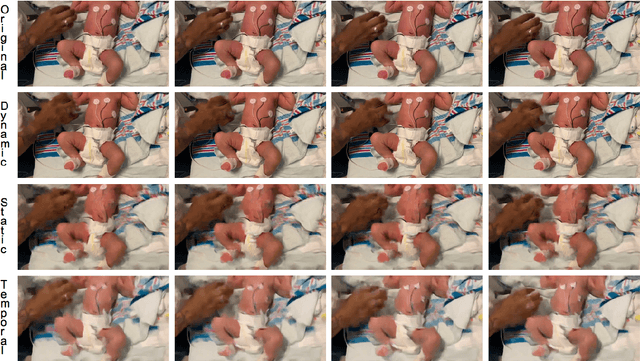Little Motion, Big Results: Using Motion Magnification to Reveal Subtle Tremors in Infants
Paper and Code
Aug 01, 2020

Detecting tremors is challenging for both humans and machines. Infants exposed to opioids during pregnancy often show signs and symptoms of withdrawal after birth, which are easy to miss with the human eye. The constellation of clinical features, termed as Neonatal Abstinence Syndrome (NAS), include tremors, seizures, irritability, etc. The current standard of care uses Finnegan Neonatal Abstinence Syndrome Scoring System (FNASS), based on subjective evaluations. Monitoring with FNASS requires highly skilled nursing staff, making continuous monitoring difficult. In this paper we propose an automated tremor detection system using amplified motion signals. We demonstrate its applicability on bedside video of infant exhibiting signs of NAS. Further, we test different modes of deep convolutional network based motion magnification, and identify that dynamic mode works best in the clinical setting, being invariant to common orientational changes. We propose a strategy for discharge and follow up for NAS patients, using motion magnification to supplement the existing protocols. Overall our study suggests methods for bridging the gap in current practices, training and resource utilization.
 Add to Chrome
Add to Chrome Add to Firefox
Add to Firefox Add to Edge
Add to Edge